The Benefits of Air Compressor Training
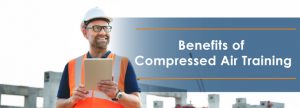
For many companies, compressed air is seen as one of the most expensive utilities. An industrial air compressor can mount operations costs of more than $800,000 in electricity over ten years. What’s worse is that much of that electricity is wasted. A typical air compression system loses about half of its air to leaks, poor […]
Read MoreHow to Calculate Your Compressor’s True Life Cycle Cost

When investing in equipment for your organization, you ideally want to procure machinery that strikes a balance between a reasonable up-front price and low long-term maintenance costs. This is especially true with regard to compressors. You’ll want to select a unit that’s going to last a long time and need minimal repairs. There are a […]
Read MoreHow Reciprocating Compressors Are Used in Refineries
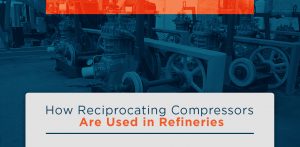
Over the past 200 years, industrialists have found ways to turn raw materials into products. At refineries, employees use these processes to convert natural oils into products that fuel vehicles and add stability to medicines, lotions and foods. The processes that turn oil from the ground into fuel for a vehicle consist of complex steps […]
Read MoreHow a Pneumatic Robot Arm Works
We might not think about them much, but robotic arms build many of the items that we used every day. Have you ever wondered how they work? Let’s take a closer look at the inner workings of a pneumatic robotic arm. Pneumatic Arm Basics A pneumatic arm, like any other air-powered system, needs five things […]
Read MoreHow to Identify Reciprocating Compressor Valve Failure

In a reciprocating air compressor, the valves are one of the most significant parts in the regulation and flow of pressurized air. When a valve is in optimal condition and performs according to plan, compressed air is distributed evenly and effectively for numerous processes. If a valve becomes faulty, however, the system lags and processes […]
Read MoreHow to Blow Out Your Sprinkler System with an Air Compressor
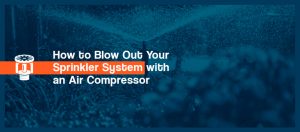
When the time comes to turn off your sprinkling system and brace for the colder months of fall and winter, there are a few crucial steps to take beforehand. If you skip these steps, your sprinklers might not work as well, if at all, when you reactivate the system next spring. So why is this […]
Read MoreEvaluating the True Cost of a Compressed Air Interruption
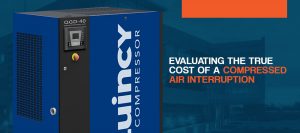
Compressed air is often referred to as the fourth utility in manufacturing. Despite its importance in a vast range of industrial processes, however, it’s largely misunderstood among many parties, including those who directly use compressors. Depending on the type of facility, air compressors could be responsible for much more than a simple set of pneumatic […]
Read MoreHow to Size and Select a Rotary Compressor
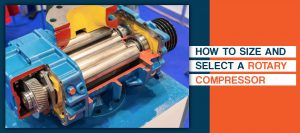
Compressed air serves numerous industrial and personal functions. As the fourth utility in industry, compressed air is largely responsible for the assembly of appliances and automobiles. Most of the furniture and vehicles you see each day are the result of air-powered arms and pneumatic fasteners along conveyor belts. Pressurized air is also largely responsible for […]
Read MoreHow to Calculate Your Current Air Demand

Any industry that uses compressed air is subject to inefficiency. This is because air compressors inherently consume a lot of energy just to produce the air, and once produced, employees tend to misuse it. It’s easy to fall into the trap of feeling like compressed air is free, but unfortunately, as anyone reviewing your electricity […]
Read MoreHow Has the Industrial Air Compressor Market Evolved Over the Last 10 Years?
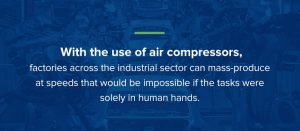
As nations outside the G8 develop local industries to compete regionally and internationally, the use of air compressors is rapidly spreading throughout the Far and Middle East, as well as through much of the Southern Hemisphere. Over the next decade, these territories could quickly become the hottest markets for manufacturers of air compressors. Compared to […]
Read More
